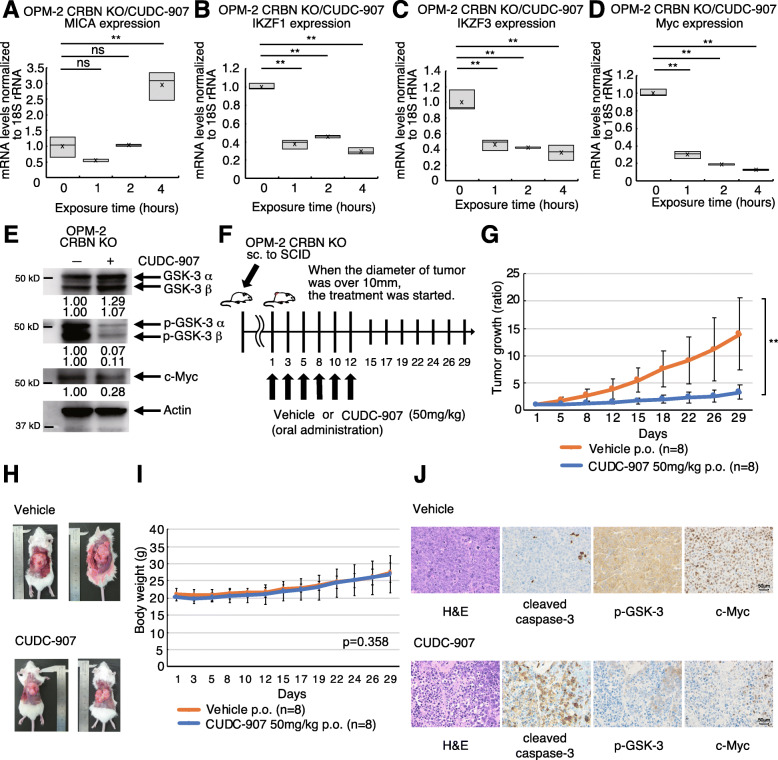Fig. 6.
CUDC-907-induced NKG2D ligand upregulation and IKZF1/3 downregulation reduces CRBN-knockout cell growth in vivo. a–d mRNA levels of MICA, IKZF1, IKZF3, and Myc in CRBN-knockout OPM-2 cells treated with CUDC-907. Experiments were performed in triplicate (n = 3). (**p < 0.01, “ns” indicates no significant difference.) e OPM-2 CRBN-knockout cell lysate treated with CUDC-907 was immunoblotted with the indicated antibodies. f Xenograft mouse model using CRBN-knockout OPM-2 cells. Eight mice were orally administered vehicle (n = 8) or 50 mg/kg CUDC-907 (n = 8) three times a week for 2 weeks. g Tumor growth (ratio) of CRBN-knockout OPM-2 cells in SCID mice treated with either vehicle or CUDC-907. P-values were calculated for the interaction terms in the regression models (**p < 0.01). h The representative images of tumors of each group at day 29. i Body weight was measured on the indicated days. P-values were calculated for the interaction terms in the regression models. j Representative patterns of immunohistochemical staining of tumor from SCID mice. Hematoxylin and eosin (H&E) staining and immunohistochemical staining with antibodies specific for cleaved caspase-3, p-GSK-3, and c-Myc showed brown-stained cells (positive) and blue-stained cells (negative). Low cleaved caspase-3 expression in case with vehicle-administered group and high cleaved caspase-3 expression in case with CUDC-907-administered group. Weak expression of p-GSK-3 and c-Myc was observed in the case with CUDC-907-administered group (original magnification × 400)

